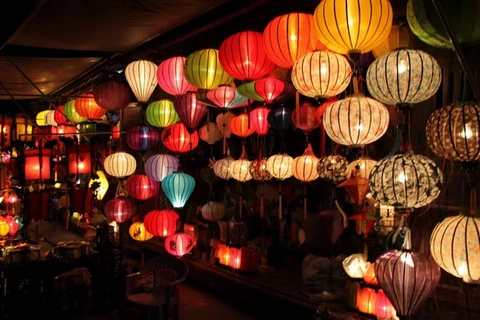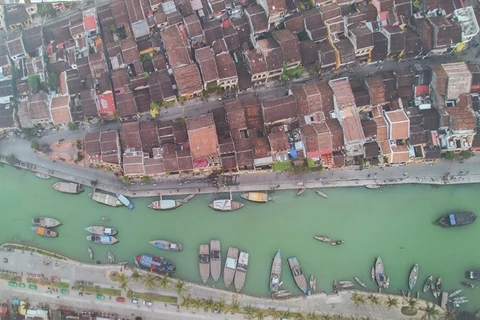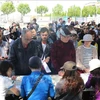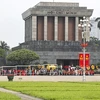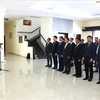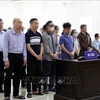Quang Nam (VNA) – The restoration of a recently-discovered ancient road in the My Son Sanctuary - a UNESCO World Heritage Site in the central province of Quang Nam - has been completed.
In April this year, Indian and Vietnamese experts unexpectedly unearthed an ancient road and its side walls, which began at the foot of Temple K, also known as Thap Cong (Gate Tower) in My Son. The road length remains a mystery. Experts believed that the road may lead to a stage for religious ceremonies at the sanctuary.
They also thought that the road was reserved for royal members and religious dignitaries during the ceremonies.
More than 4,000 bricks taken from the ancient underground road and some new manually-made bricks were used to re-build the two parallel side walls of the road. The walls, which are eight metres apart, are each 0.6m wide and 15m long.
The experts have also cleaned the body of Temple K and replaced the damaged bricks with those excavated around the temple. They also used wooden bars to reinforce the tower to prevent it from falling under the impacts of weather.
According to Head of the My Son World Heritage site Management Board Phan Ho, the reinforcement and restoration of Temple K will be resumed in early 2018.
The restoration project has a total cost of more than 2.7 million USD, of which the Indian government funded 2.3 million USD.
Once the religious and political capital of the Champa Kingdom, My Son Sanctuary is located in a hilly landscape in Duy Phu commune, Duy Xuyen district, about 70 km southwest of Da Nang city and 40 km from Hoi An city.
It comprises eight groups of 71 monument built throughout the 7th -13th centuries.
The temples in My Son were built into groups that basically followed the same model. Each group was comprised of a main sanctuary (Kalan), surrounded by towers and auxiliary monuments. The towers, topped with tiled, covered roofs, were stocked with offerings and sacred objects of the pilgrims. Cham temples do not have windows, so they are very dark inside. Windows are found only in the towers.
Extensive research and restoration work to preserve the Cham architectural heritage has been carrying out since it became a world heritage site since 1999.-VNA
VNA



